The way to count chain links is by counting each outer link.
Motorcycle and Bicycle chains contain inner and outer links. Outer links are bigger and clamp onto the Inner links (See image)
Some folks call these inner half-links and outer half-links.
1 complete link includes 4 pins.
A properly cut chain will have either a master link as the first one in the sequence (or, an outer link if no master link is used)
Bicycles and motorbikes need chain replacements when the chain develops enough wear on the pins and bushings that the chain appears to have “stretched” it can cause slipping.
Motorcycles need to be replaced 2% stretch.
Bicyles need to be replaced at 1% stretch.
Worn out chains slow down the shifting of gears, and they can grind down the sprockets, causing additional repairs.
See Related: How To Measure Chainsaw Bar Length
In a hurry? Quick Links:
Measuring For Chain length
Chain Width
Chain Slack – Bicycles
Chain Slack – Motorcycles
Zachary Drumm
Replace motorcycle chains every 20,000 to 30,000 miles and Bicycle chains every 3,000 to 5,000 miles.
When Measuring for chain wear on a motorcycle, you want both wheels on the ground. Pull the chain away from the rear cog. Less than 1/2 of the cog teeth should show, indicate less than 1″ of throw.
Replacement chains are not sold in the exact length. Most of the time, the bike chains come longer than needed and will need to be cut to size with a chain break tool.
For this article, we will look into different methods that you can use to size the bicycle or motorbike chains.
Step 1
Keep the bike secure. A maintenance stand makes this process easier. With a maintenance stand you can secure the frame, but turn the wheel and chain to count links.
Step 2
Mark the first outer link with a grease pen (I’ve also used a sharpie for this). Now, if the chain is already visibily cut, or if you have pulled the chain off of the bike, this step is unneeded. You just want to be able to tell when you have circled back around.
Step 3
Count each outside link by two’s. This will take into account the inner link as well. Keep in mind that there will always be an even number of links since the inner plates must always attach to outer plates. YOU MUST ALSO COUNT THE MASTER LINK.
If the chain is already detached, you can get a rough estimate by laying the new chain and the old chain next to each other and comparing lengths. Worn-out chains, however, stretch out and may appear to be longer than they actually are.
Counting chain links is a more accurate sizing technique. A standard motorbike chain box has 120 links with 60 inner and outer links, making 120 links and measuring about 60 inches long. Bicycle chains are generally sold in about 114 or 116 links (AKA half-links, for the purists). If working on a tandem or a recumbent with a long chain stay, it is possible to combine multiple chains.
After you’ve counted the correct size, you can detach the extra links with the use of a chain tool.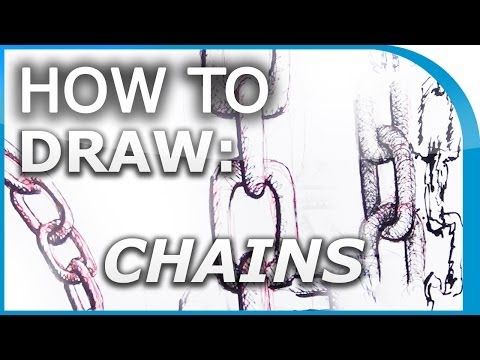
Protip: only push the roller pin most of the way out — not all of the way. Leaving it sticking out of one outer plate, will make it easier to get the pieces lined up when re-assembling.
Chains either use master links or are connected with the rivets (roller pins). The Master link has two removable outer links that connect the chain ends together and does not require tools to install. Otherwise, you’ll need a chain link tool to press the roller pins into place.
A Note About Bicycle Chain Width
If you buy a chain that is too long, it will hang and interfere with the gear shifting. When too short, it can cause too much tension on the derailleur hanger, damaging it.
Sram and Shimano are generally cross-compatible, but Campagnolo is not.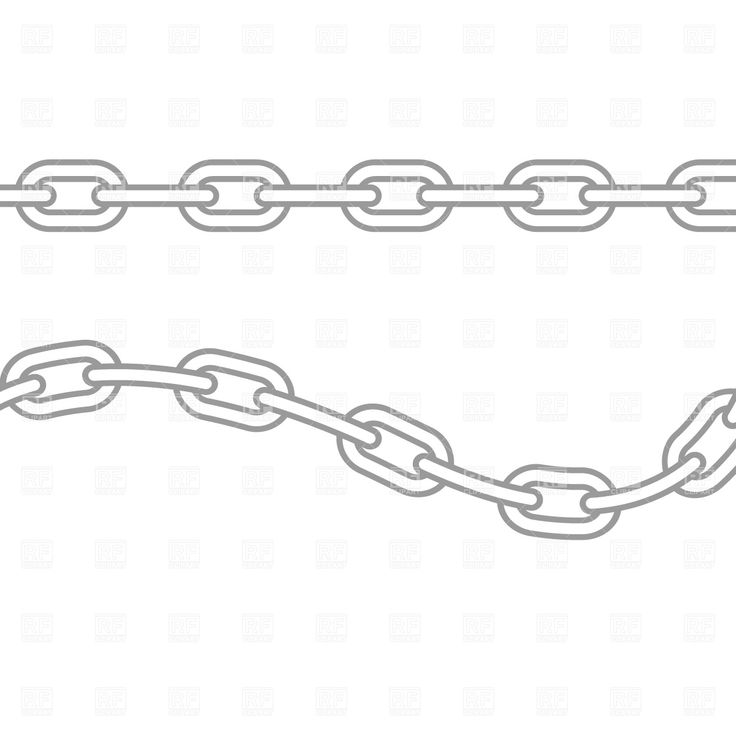
Shift the chain on the largest front chainring and to the largest cog on the rear sprocket. The chain length should allow for at least two bends in the rear derailleur pulleys and the derailleur should still hang down and not be stretched horizontally.
Then, shift to the smallest chainring and smallest sprocket. The Derailleur should still have enough tension that it does not rub on itself in this position.
Motorcycles have the ability to adjust some of the slack out of the chain. When you push up on the bottom of the chain, there should be about 1.2-1.6 (30 mm to 40 mm).
Changing a bicycle chain or motorcycle chain may seem hard the first time, with the right tool for the job, you can accurately size the bike chain. Exceptions are made to a bike that uses a chain guide for chain length determination and needs to be routed through the system. Remember to add the two rivets before cutting. Chains and cassettes from different manufacturers are interchangeable, but SRAM chains are not compatible with Campagnolo.
Finally, remember to regularly clean and oil the chain as it is exposed to dirt and weather. Regular maintenance is needed to minimize wear on the chain. Use soapy water or a chain cleaner to wash off dirt, and oil the chain after drying.
Regularly check if the chain needs replacement. The chains have a lifespan and need to be changed after they are worn out.
Check for wear of the bike chain to prevent the worn-out chain from damaging the sprocket and the chainrings. Replacing the chain after the bike has cover specific miles might not be efficient as the environment may also play a role. A bike chain will wear out faster in salty areas.
Asked
Modified 5 years, 5 months ago
Viewed 48k times
I thought this was a simple question but apparently there is some confusion - and it's good to have a basic question to refer people to.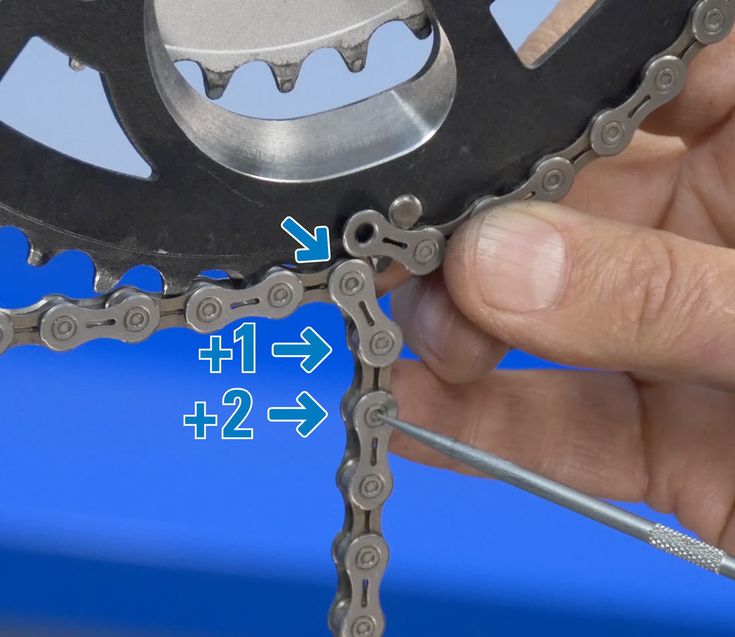
How many "links" are in these short bits of chain:
Image A (the original image for this question):
Image B:
Some people thought the bit of chain was too short and was missing a set of rollers, or wasn't in a loop. Here's a longer length of chain -- exactly twice as long as Image A, in fact.
In your responses, try to make it clear whether you're referring to Image A or Image B.
12
Each set of "inner plates" is a link. Each set of "outer plates" is a "link."
In the photo below you can see two whole links.
Thus to answer the question, Image A in the question above has 4 links. Image B has 8 links.
When you buy this box of chain that is labeled as having "120 links" and is standard 1/2" pitch, you should expect to get 60 inner links, 60 outer links, for a total of 120 links and it should measure 60" long:
Another way of thinking about links is that a "link" as a "place where a tooth goes" - thus if a chain wrapped completely around a 44 tooth chainring - it would have 44 links -- with 22 outer-plate-links and 22 inner-plate-links.
Another way to analogize is with a standard chain:
Everyone would agree that the standard chain image above has six links - each link creating one "hole".
Please note that there is a small but vocal group of people (including Sheldon Brown) who count a "complete link" as "one inner and one outer half-link". Counting "complete" links has the effect of halving the number of links (thus Image A would have 2 complete links, Image B would have 4 complete links, and that five foot length of SRAM chain would have 60 complete links).
Counting "complete" and "half" links as Sheldon does is non-standard at least as far as the industry is concerned. If someone starts talking about "complete" and "half" links when talking about chain length, you should clarify with them what they are talking about as you may end up with half or double the number of links you might otherwise expect.
1
But is is not as easy as counting links on an open chain.
The links must connect. With inner and outer you must have an equal number of inner and outer. The total must be even.
Let's say one link was removed from that chain. You would have to remove another to make it two links to connect and at two folded back on itself and I am not sure you could even call it a two link chain.
And then there is the connector thing. Connector is typically outer so you want the raw chain to end on inner both ends and you need to add one for the connector. Some times on a new chain the connector is on the chain and some times it is packaged separately. You have pin type one time connectors and reusable connector links.
You can use a 1/2 link connector to get an odd number of links. 1/2 link is used by the wider SS and fixie where you may need a more exact length. I don't think it is used in the narrow chains designed for derailleur.
HL is also a style of chain but it is pretty much limited to SS, fixie, and BMX as far as I know.
Below is a SRAM with a reusable PowerLock on the left. The picture is 14 links. This chain is packaged as 114 links. You will typically cut the chain down and save the spare links for repair. Rather than count I just lay the old chain down next to the new. There is going to be some stretch so you may need to adjust to match up links (or pins/rollers).
It is not like you go the shop and buy a specific size so I have never found a need to know the number of lengths in my chain. 114 and 116 seem to be common packaging. If you have a touring with a long chain stay or tandem then you would have some custom length chains. I suspect they just buy multiple packages and some extra connectors. You can buy spools of raw chain.
Every manufacturer seems to count chain length the same in chain packages. Here is a safe definition if you want to remove the possible confusion of plate, half, or full.
10
I didn't really see this point of view yet, so I'll add it.
The key here is in the word itself. A link is not the flat bit of metal with two holes for pins, it is the "link" between two of these pieces. In other words, a 120 link chain has 120 connections between bits of metal. Counting the pins works, as does counting the holes between pins. This means that the open chain in image A in the question only has three links, while the closed chain in image B has eight.
However, general parlance does not always follow this. If you take a single loop from a typical chain, you might call that a "chain link", even though there is no actual "link". So this might be a bit of etymology more than anything else.
9
Count the number of pins/rollers that would be present if you closed the chain, in this case Image A would be classified as having four "links" - answer (c), but really (e) because I don't think description quite matches the counting procedure.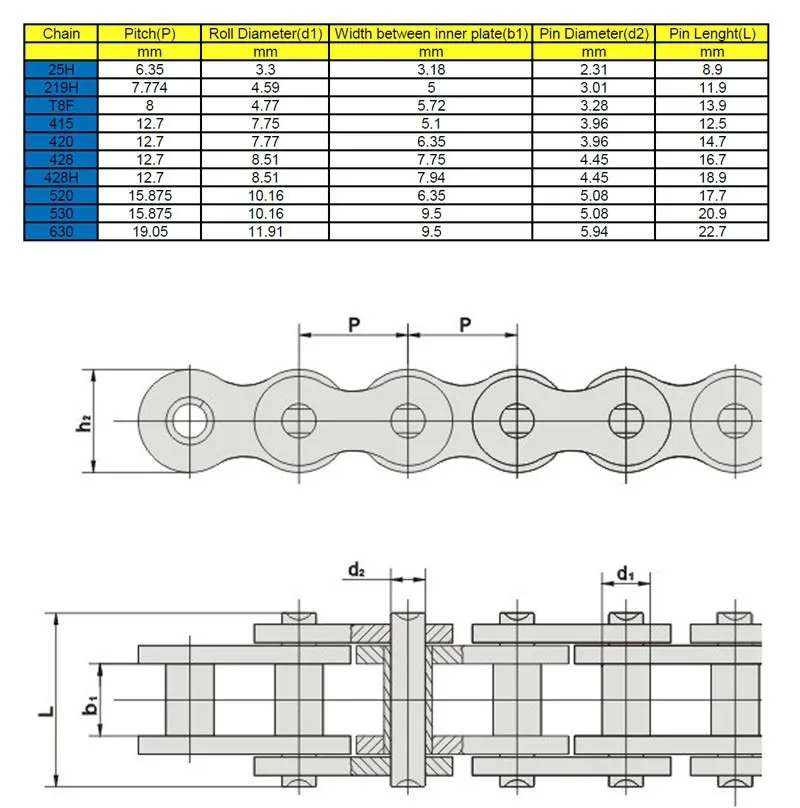 This is why I always hated multiple choice!!!
This is why I always hated multiple choice!!!
By the way - I am not clear on what you imply counting inner and outer "links" - inner and outer plates are involved in each junction/link.
5
I think perhaps there is some confusion in the term "link." Here are a couple of definitions that seem to be in use:
Under the both the first and second definitions, chain A in your example has four links and chain B has eight links.
The venerable Sheldon Brown seems to subscribe to the third definition. He refers to a single set of inner or outer plates as a half link. A set of inner and outer plates constitutes a full link. This is because (barring non-standard equipment like half link connectors) it is impossible to join two ends of the chain if they both consist of inner or outer plates.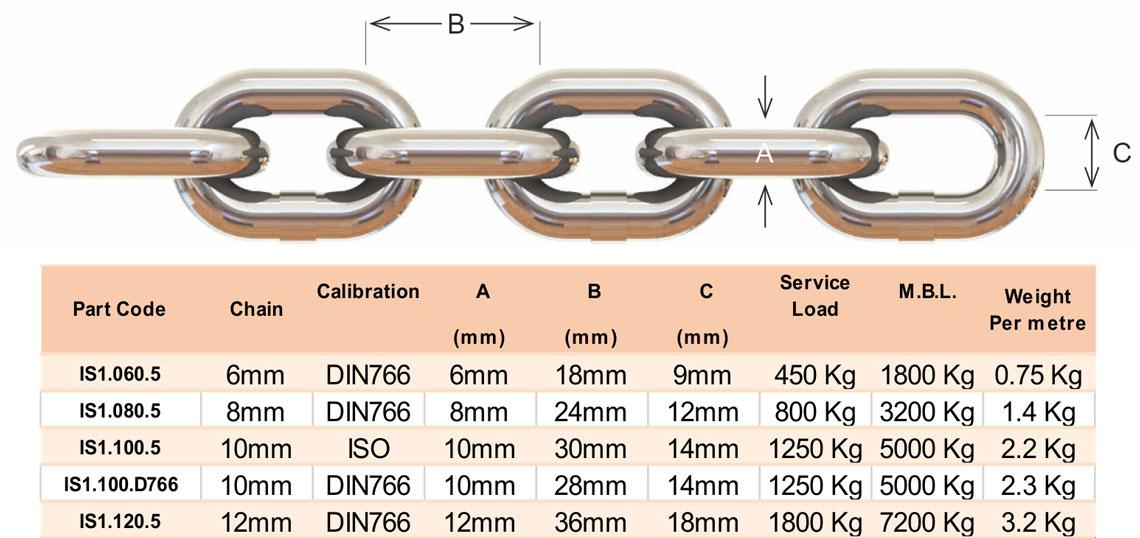 You must have inner plates on one end and outer plates on the other. By this definition, chain A in your image has two full links or four half links and chain B has four full links and eight half links.
You must have inner plates on one end and outer plates on the other. By this definition, chain A in your image has two full links or four half links and chain B has four full links and eight half links.
Personally, I prefer the third definition because it is the smallest functional piece of chain.
04/14/2020 15:04:00
In "Bike Land" , the assortment of the two largest manufacturers of this consumable is presented: JT and DID , and their proprietary indexes have a number of differences. Let's talk about each separately, but first - common features.
Almost all markings begin with a three-digit number - the most common are 520, 525 and 530. The first number indicates the chain pitch (that is, the distance between the axes of the links), the next two indicate the width.
The first number indicates the chain pitch (that is, the distance between the axes of the links), the next two indicate the width.
Also, if the chain is omental, the index will contain a letter that indicates the type of seal: O-ring, X-ring, W- or Z-ring.
114, 118, 140 and so on is the length of the chain in links. nine0003
Letter designations in DID brand chains.
The original marking consists of numbers and letters, applied to the outside of the chain. First, the step and width are indicated there, and then the parameters and purpose. Some positions have the letters DID at the beginning, indicating the manufacturer. Basic models:
1. DID VX chain: Durable chain designed for road and sports equipment.
2. DID ZVMX chain: The strongest chain in the company's line, designed for road and sports equipment. nine0015 3. DID ERT2 chain: Standard non-seal motorcycle chain designed for installation on off-road vehicles.
4. DID MX chains: The most durable non-seal chains for motocross and motards. The choice of most athletes competing in off-road conditions.
The choice of most athletes competing in off-road conditions.
5. DID VT2 chains: Recommended for installation on enduro bikes. Often used on vehicles in preparation for rally raids.
6. Chain DID520ATV: Reinforced ATV chain.
7. DID VO chain: Reliable and inexpensive chain for moderate power road bikes. nine0003
Letter designations in JT Sprockets chains.
The original marking also consists of numbers and letters. First, the step and width are indicated there, and then the parameters and purpose. Some positions have JTC at the beginning, meaning "JT Chains" - JT Chains. Basic models:
1. HDR2 - entry level.
2. HDX2 - reinforced chains.
3. X1R2 - the most reinforced chains.
4. Z1R2 - top chains, the pinnacle of quality and strength. nine0003
Further marking may contain:
Chain color: GB - gold with black, NB - nickel with black, NN - nickel, GS - gold with nickel, BS - black steel.
Type of chain lock: RL for riveting, SL for spring latch, DL - two locks included.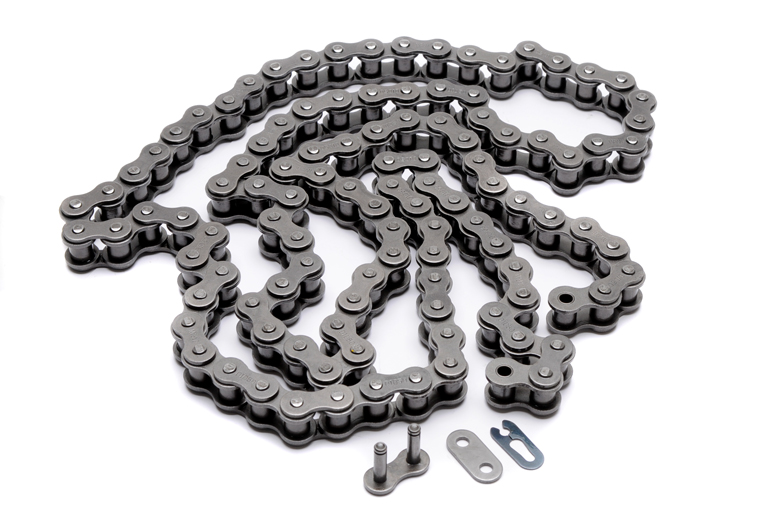
We hope that this information will be useful for you and will help you understand all the variety of motorcycle chains.
To return
Share:
Posted by Workshop 20 Comments
At the beginning of the article, it is worth saying a little about the chain drive itself, about its features, pluses and minuses.
To date, one of the most common rear wheel drives is a chain drive.
The advantages of the chain drive are obvious: high efficiency, ease of maintenance and installation, the ability to easily change the gear ratio, relatively low cost. nine0015 There are not so many minuses, but they are: first of all, it is the need to lubricate the chain and, as the motorcycle chain wears and stretches, tighten it in a timely manner to prevent excessive sagging.
The first thing to look at is the motorcycle chain pitch. Each motorcycle chain has a digital marking. The most common chains are: 428, 520, 525, 530. The first number indicates the chain pitch. The second and third width of the motorcycle chain.
Each motorcycle chain has a digital marking. The most common chains are: 428, 520, 525, 530. The first number indicates the chain pitch. The second and third width of the motorcycle chain.
The next thing to know is the number of motorcycle chain links we need. Everything is simple here. You can take our old worn chain and count the number of links, or use some sites to select drive sprockets to see the required number of links on our motorcycle. But if the gear ratios are changed, then, accordingly, the number of chain links will be needed either more or less, depending on the selected drive stars. nine0015 Having dealt with the number of links and chain pitch, we move on to the types of seals.
To begin with, motorcycle chains should be divided into glanded and non-glanded chains.
Well, if everything is clear without stuffing chains, then a little more attention should be paid to stuffing chains.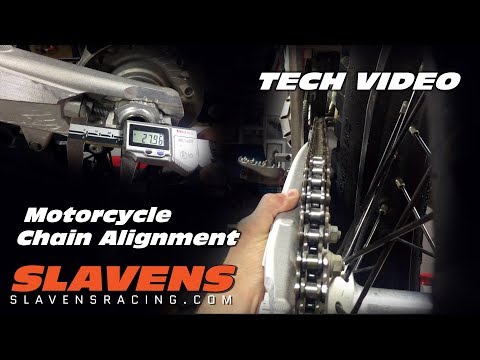 It is customary to mark the sealing motorcycle chains depending on the type of seals or seals. The simplest type of oil seals is O-ring, the more advanced ones are X, W, Z-ring (they have a higher resource and less friction losses). The purpose of motorcycle chain seals is to retain factory grease inside the rollers. This lubricant minimizes wear on pins and rollers, significantly increasing the life of the chain as a whole. So that the oil seals of the motorcycle chain do not dry out and do not lose their effectiveness, it is necessary to regularly lubricate the motorcycle chain with special lubricants. nine0003
It is customary to mark the sealing motorcycle chains depending on the type of seals or seals. The simplest type of oil seals is O-ring, the more advanced ones are X, W, Z-ring (they have a higher resource and less friction losses). The purpose of motorcycle chain seals is to retain factory grease inside the rollers. This lubricant minimizes wear on pins and rollers, significantly increasing the life of the chain as a whole. So that the oil seals of the motorcycle chain do not dry out and do not lose their effectiveness, it is necessary to regularly lubricate the motorcycle chain with special lubricants. nine0003
Looking through the history and evolution of motorcycle chains, it was the omental chains that made it possible at one time to abandon the use of protective casings and use the open system that we now see on almost all motorcycles.
However, chains without omental chains are still used, but as a rule, either in sports or on small-capacity vehicles. Particularly popular are non-glanded chains and are widely used in motocross and Hard Enduro.
Locks for motorcycle chains are usually supplied with the chain. Therefore, there is no need to invent much here, we just take and install the connecting chain lock. If we need, for some reason, a new motorcycle chain lock, then here we definitely need to know the chain marking and under it we select a chain lock with exactly the same marking. Installing locks with different markings is not desirable, since there can be not only different thicknesses of pins and plates, but also different steel. Therefore, so that our chain does not have weak points, we install locks from the same manufacturer and with exactly the same markings. nine0003
At the end of the article
In addition to the main parameters of the drive chains listed above, it is necessary to take into account on what equipment and in what conditions the motorcycle chain will be used. For example, if we have a powerful liter sport bike, then the need to install reinforced chains is obvious.